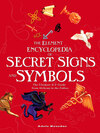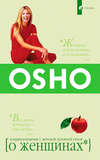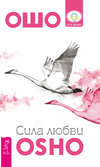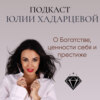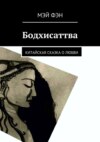Читать книгу: «The Element Encyclopedia of Secret Signs and Symbols», страница 13
THE TREE OF LIFE
This is the most famous graphic representation of the Kabbalah’s diverse unfolding of ideas. All of nature is enclosed within its relatively simple form, which has multi-layered dimensions of significance that belie a straightforward graphic representation. Its ten spheres or sephiroth represent the ten numbers, and are connected by 22 paths or branches that also represent the 22 letters of the Hebrew alphabet. The letters and numbers comprise the 32 paths of wisdom that are written about in the Sefer Yetzirah, the very early kabbalistic text said to have been written by Abraham.
The three columns of the tree are symbols in themselves. The central one represents balance or equilibrium. The one on the right is called Jachin, male energy; on the left is Boaz, female energy. These are the
pillars that were represented in the Great Temple in Jerusalem and which also influence the design of Masonic temples. They also appear in the Tarot. Here are the component elements of the tree.
The Ten Numbers
Behold! From the Ten Ineffable
Sephiroth do proceed the One Spirit of the Gods of the Living; Air, Water, Fire, and also Height, Deoth, East, West, South and North
[from the Sefer Yetzirah]
In the diagram, these are represented by the spheres or sephira.
ONE
The uppermost sephira of the tree is One, the Crown (Keter). It is the start of manifestation, positive, but undefinable because it as yet bears no relation to anything else.
TWO
To the right of Keter, just below it, is the sephira of Hokhmah or Wisdom, the number two. It enables a line to be made between it and the number One.
THREE
To the left of Hokhmah is Binah, meaning “understanding.” It makes a triangle and all three numbers give definition to one another.
These first three sephiroth represent Atziluth, the element of fire and the first of the four worlds described above.
FOUR
Next, moving down the Tree, beneath Hokhmah, is Hesed, or Mercy. Now the Universe contained within the Tree can have four elements and four directions, and can form a square.
FIVE
To the left of Hesed is Gevurah, meaning strength. This implies the idea of time, without which nothing can happen in the Universe as we experience it.
SIX
With Tif’eret, meaning beauty, another dimension is added; as well as the four elements and “above” and “below.” The number six contributes the notions of past and future and consciousness of the self.
SEVEN
Netzah, or victory, is the next of the sephira. It sits below Hesed. It represents the notion of the emotional nature and the pure joy of existence. Despite the possibility of suffering, the soul is happy to be made manifest in human form.
EIGHT
Hod, or Splendor, symbolizes the intellectual nature, or thought.
NINE
Yesod, the Foundation, brings the notion of Sense of Being, adding to the emotional and intellectual natures of Tiphareth and Netzach to give man a sense of reality.
TEN
The final sephira, sitting at the bottom of the tree, is called Malkhut, or the Kingdom. Here, the void represented by the zero has become manifest, and self-consciousness is fully developed within a physical world. It is appropriately sited at the base of the tree since it is the sphere of all life on Earth.
The Triple Veils of the Negative: the threefold nature of zero
In the Kabbalah, the concept of nothing, or zero, is called Ain, the void. This concept embraces two further ideas: firstly Infinite Space, called Ain Soph (without limit). This concept is represented by the dot, or bindhu, which contains the seed of everything within it. There is also the concept of a time-space continuum, Ain Soph Aur, the Limitless Light. These abstract ideas are the Triple Veils of the Negative.
The 22 letters
Like other magical alphabets from different traditions, the characters of Hebrew are thought to be the magical symbols with which God created the physical world by means of the sounds they represent.
These letters are generally split into three groups. There are three “mother” letters that correspond to the elements of air, water, and fire. The seven “double” letters correspond to the seven traditional planets, and the 12 remaining “simple” letters are linked to the signs of the Zodiac. Again in common with other alphabets, the letters also correspond to numbers and so have a double meaning. The letters are represented in the tree diagram by the 22 paths that link the spheres that contain the numbers.
Kabbalists also link the five parts of the human soul to the four elements, plus the fifth element, ether, or the quintessence. Earth is the “animal soul” named Nephesch. This is the domain of the instincts and the senses. Air symbolizes the intelligence and is called Ruach. It corresponds to the breath, too, and has the same meaning as Prana in Sanskrit philosophy. Water is called Neshamah, and in common with other traditions this element corresponds to the intuition. The fiery part of the soul is called Chiah, and has the same meaning as Chi, the essence of life. Finally, Yechidah encompasses the whole, the Highest Self, symbolizing spirit.
These further intricacies and connections within this fascinating system are far too elaborate to explain within the confines of this book, in the vigorous depth that they deserve. Hopefully this brief description of the concepts used within the Kabbalah will provide a fundamental grasp of its mysteries.
KAPALA

The kapala, or Thod Pa, is one of the “charnel ground” implements used in sacred rites in Tibetan Buddhism. It is a bowl or chalice made from a human skull, highly decorated and extremely valuable.
It is thought that the use of the skull may originate from much earlier times, from the practice of human sacrifice. The kapala is a symbol of the triumph of good over evil. Each skull is carefully selected, washed, and sanctified before use.
A kapala made from the skull of a child that died prior to puberty is particularly desirable, because of its purity. The object is usually held with the left hand.
KERUB

The original Kerubim are very different from the chubby-cheeked little creatures that seem to pop up everywhere these days, which are in fact completely different creatures known as putti. The “true” Kerubim are imposing, winged creatures who guard the thrones of Gods and kings as well as the Mesopotamian Tree of Life. The Book of Ezekiel in the Old Testament of the Bible describes the four Kerubim, each of which have a different head; the lion, the bull, the eagle, and the human head. These were later absorbed into the symbols of the four evangelists, Matthew, Mark, Luke, and John, of the New Testament.
These mighty Kerubim are also the embodiment of the energy in the Tetragrammaton, the Name of God in symbolic form.
KEY

The key, or clavicle, is symbolic of access to something that has been hitherto kept hidden or which is a secret. However, keys are used for locking as well as for unlocking, and deities that are depicted holding keys, for example, may symbolize the need to keep something private or occluded. A key need not be a physical object, and the act of unlocking is not restricted to mundane artifacts. A code, for example, may hold the key to understanding a secret language or cipher. Holy and sacred words were considered such powerful locking/unlocking mechanisms that they were rarely used; for example, the words “Open Sesame” were a key that unlocked the door into the treasure cave.
Our ancestors used the physical key as a magical charm or talisman, an example of sympathetic magic, when something needed to be unlocked in some way. For example, Jewish midwives put the key to the synagogue into the hand of a woman who was about to give birth, in the hopes that the association would help the baby “unlock” the door of the womb. Keys were buried with people in order that the gates to the Underworld would open easily.
St. Peter, one of the apostles of Christ, holds the keys to the “pearly gates” of Heaven. These crossed keys have become a Papal symbol and represent the powers given by Christ; one key is gold (the Sun, and male energy) and the other is silver (feminine energy, the Moon). The golden key signifies the power to bind or release in Heaven, and the silver represents the same powers on Earth. Prior to their adoption by the Pope, these gold and silver keys were the attribute of the Roman God, Janus, whose two faces mean that he can look in two directions at the same time. These keys symbolically unlocked the gates of the solstices.
Initiation, too, provides a key that unlocks secret knowledge or information. The key is a symbol of power, a visible sign of this initiation. Being given the keys to a town or city is a great honor, with implications of power and ownership and has parallels with the medieval custom of handing over keys as a way of granting power. The “key of the door” that is given on the 21st birthday signifies the coming of age into adulthood, and the Tarot card that is numbered 21 is the card of the World.
KHANDA

A symbol belonging to the Sikh religion, the Khanda symbolizes the four aspects of the Sikh faith as well as encompassing the four sacred weapons within its shape.
The double-edged sword that gives the Khanda its name is in the center of the symbol. It stands for the creative power of God and the knowledge of divinity.
The circle around the edge of the Khanda dagger is called the chakkar, or wheel, and the word shares the same root as chakra. This is also a medieval weapon, and like all circular symbols, it represents eternity and unity.
The daggers at either side of the symbol, which cross over at the bottom of the symbol, are called Kirpans. These knives belonged to the guru Hargobind and symbolize the balance of spirit and matter.
KNOT

Knots, because they symbolize the act of binding, hold powerful symbolic and magical significance. The notion of binding extends to the spirit, as well as material things. In some pagan wedding rites the hands of the bride and groom are bound together, physically, as a symbol of the vows that bind them together, body and soul. For Buddhists, the untying of a knot signifies an unbinding from material things, to become liberated from them, and is therefore symbolic of death.
Knots hold a great significance for fishermen, not a surprise considering that fishing nets are constructed from knots. Any person who risks his life by putting themselves at the mercy of the elements tends to have an understandably superstitious approach to life. Some fishermen still carry a piece of rope with three knots in it, although they may have forgotten what these knots symbolize. The first knot, if untied, brings fair winds; the second, storms; and the third keeps these storms in check. Arabic men believe that the knot is a powerful talisman against the evil eye, so they tie a knot into their beards. However, it is forbidden for pilgrims to Mecca to wear any knots in their clothing.
The Qu’ran mentions a specific charm for the making and using of knots. It reads:
Say thou: “I take refuge with the Lord of Daybreak
From the evil of all He hath made And from the evil of the dark night when it spreads
And from the evil of those who blow upon knots
And the evil of the envious when he envies.”
This refers to the magical practice of using the breath to charge an item with magical powers.
Because weaving and knitting are female crafts that involve a complicated series of knots, and because women “knot” their hair, knots and knot magic are closely associated with witches. In the Qu’ran, for example, there is a warning against “those who breathe on knots.” This refers to the witches that were supposed to cast spells in this way. The Three Fates of Greek mythology weave and knot the threads of existence. Midwives ensured that birthing mothers had no knots about their person that might hinder the birth of the baby.
Egyptians believed that the knot symbolized eternal life. They tied their sandals in such a way that the knot made an imprint on the ground, a reminder of the Knot of Isis.
KNOT OF ISIS
See Tyet.
KOKOPELI

Kokopeli, in Hopi Indian, means “wooden backed.” It is the name of a symbol that first appears in prehistoric rock carvings, a hunchbacked little figure with antlers on his head, playing a flute. Although the true age, provenance, and explanation for this curious symbol are indeterminate, Kokopeli is believed to be a fertility symbol, hence the antlers and the small bag (possibly containing seeds) which he sometimes carries. Kokopeli represents the essence of the creative force, in whatever form it might take.
There is a Hopi legend which says that Kokopeli traveled from village to village playing his flute. Wherever he went, he was welcomed with a huge party, the villagers singing and dancing all night. In the morning, presumably through the haze of a terrible hangover, Kokopeli had evidently shared his magical powers of fecundity since all the fields were full of healthy crops and all the girls would shortly find that they were pregnant. Kokopeli also symbolizes the end of winter and the coming of spring, hope, and new life.
KUNDALINI SERPENT
This is the symbol used to describe the vast reserve of physical and spiritual energy that lives, half-dormant, at the base of the spine. Derived from a Sanskrit word meaning “spiral” or “coil,” the Kundalini Serpent is coiled into three circles, with its tail in its mouth, similar to the ouroboros. Kundalini energy is female, and when awakened systematically by techniques such as yoga and meditation, she spirals up the spine via the chakras toward the top of the head, where she joins the male energy that comes down to meet her from above. This descending masculine energy symbolizes the consciousness of the unity of the Universe.
LABARUM

The earliest Christian symbol, prior to the adoption of the Latin Cross, was the Labarum. This symbol has a very early provenance, since it is believed to have been an adaptation of the Egyptian ankh and was also a symbol of the Sun God, Mithras. In this case, it appears enclosed in a wheel. The Labarum proved a handy device for bridging the gap between Mithraism (the favored religion of the Roman soldiers) and Christianity.
Not only does the symbol contain the first two Greek letters of Christ’s name (hence it is also known as the “Chi Roh” or the “Monogram of Christ”) but it was given immediate prominence when Emperor Constantine saw the symbol in a dream.
Constantine was a major figure in the spread of Christianity, the first Imperial Emperor to adopt the new religion. Some accounts of his vision of the Labarum say that his entire army saw the symbol hanging in the sky. This anecdote, incidentally, has parallels to the story of the crescent Moon and star symbol, also seen in a dream by Osman, founder of the Ottoman Empire.
Like Osman, Constantine’s dream told him that the sign would bring victory, and so he had it painted onto his soldiers’ shields.
It may have been coincidence that shortly afterwards Constantine’s forces won the Battle of the Milvian Bridge, but nevertheless the Labarum’s place as a hugely important symbol was determined, adopted as the emblem of the Empire in AD 324, 12 years after the decisive victory.
LABRYS

Although the word labrys is Greek and refers to the double-headed axe or hatchet, the symbol exists all over the world, in India, Africa, and England as well as in the European countries.
The single-headed axe is symbolic of the power of light (because it sometimes makes sparks) and of thunder and lightning. It is often seen as the favored weapon of various Gods, such as Thor.
The double-headed axe is more complex. The first instrument of its kind is believed to have been made 8000 years ago, and it was the favored tool of the Amazonians who lived in central Asia, specifically in the Kazakhstan area. Because of its shape, it carries much of the significance of the tau cross. Its name suggests that it is connected to the labyrinth; both were powerful symbols in the Minoan culture of ancient Crete, as was the bull. The labyrinth at Knossos used the image of the Labrys as a decorative device. The double-headed axe is sometimes seen over the head of the bull or ox, whose horns it resembles. In addition, the bull was ritually slaughtered using the Labrys.
The Minoan culture was pre-dominantly matriarchal and because of this, and because the Labrys has strong links to the female Amazonian warriors, the term “battleaxe” has come to mean a ferocious woman. Various lesbian groups adopted the symbol sometime in the 1970s, and some women wear it as a piece of jewelry to indicate their sexuality.
LABYRINTH

The earliest recorded instance of the word “labyrinth” is in descriptions of the labyrinth that housed the minotaur in Greek myth. The name means “house of the double axe,” a reference to the Labrys that was a powerful emblem of Minoan culture. Although the labyrinth and the maze are often referred to as the same thing, a maze has lots of different paths, including branches that lead to dead ends, whereas a labyrinth has only one winding path that leads ineffably to the center and offers no possibility of choice. The space available within the labyrinth is used ingeniously to ensure that the path is as long as possible.
The most significant symbolism of the labyrinth is that of the journey of the soul to its center and then back toward the outside once more, the cycle of death and rebirth, a metaphysical pilgrimage of the spirit. The center of the labyrinth represents the womb, and to reach the center of the “labyrinth of life” is initiation and enlightenment. In this sense the labyrinth has parallels with the mandala as well as with the spiral patterns of the Celts, a good example of which can be seen on the massive stones in front of the entrance at Newgrange in Ireland.
Labyrinth patterns are universal, and earlier than the mythical labyrinth. They appear on fragments of amulets from Ancient Egypt, on Mycenean seals, and on Etruscan vases.
Labyrinth patterns were adopted by Christian churches, the earliest of which is in Algeria, at the Reparatus Basillica, dating back to the year 324. There is generally held to be significance in the number of concentric shapes or layers of the path, and also its length; the famous labyrinth at Chartres Cathedral, for example, has 11 concentric circles and is exactly 666 feet long. Because the number 666 is usually misconstrued as having evil origins, this has led to some wild conspiracy theories about the designer of the labyrinth, but 666 is a sacred number, the number of humankind. In the center of this particular labyrinth is a six-petaled flower that conceals the hexagram or Seal of Solomon within it, a reminder that labyrinths are sometimes called Solomon’s Maze.
Because the winding trail of the labyrinth moves both in a clockwise (deosil) and an anticlockwork (widdershins) direction, it symbolizes the course of the Sun and the waxing and waning of the Moon.
Бесплатный фрагмент закончился.
Начислим
+26
Покупайте книги и получайте бонусы в Литрес, Читай-городе и Буквоеде.
Участвовать в бонусной программе
